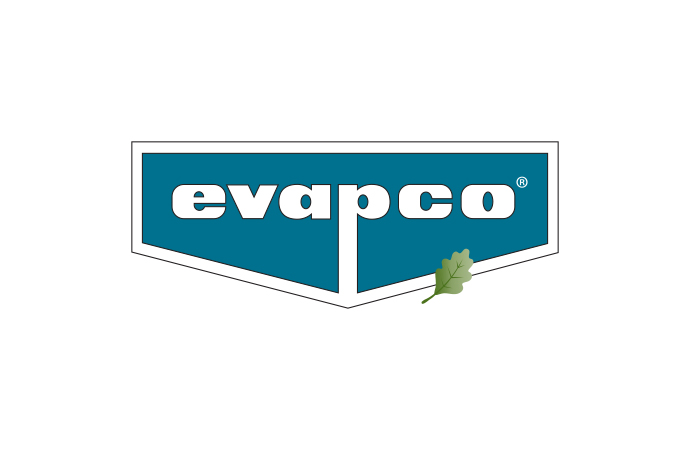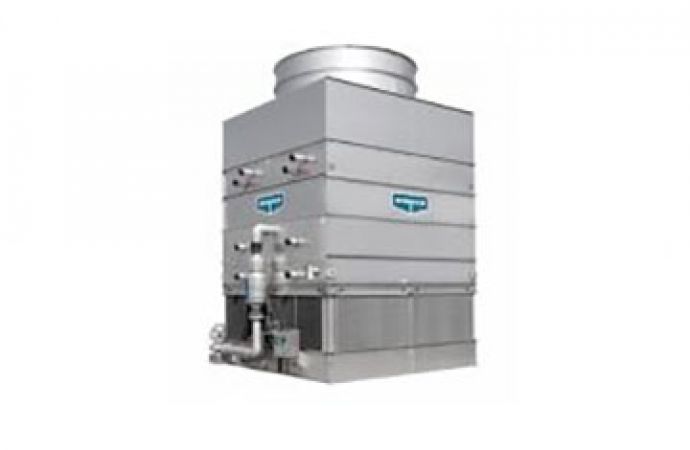Spurred by a fatal accident at a fertilizer plant in West Texas on August 1, 2013, the focus on improving low charge ammonia solutions and plant safety has shifted firmly into focus in the U.S.. The horrific ammonia nitrate explosion at the West Fertilizer Company set off a chain of regulatory actions that have heavily impacted the industrial refrigeration industry (read the full story in the fifth edition of Accelerate America at http://accelerate.shecco.

In addition to increasing the number of inspections and fines levied on warehouses, the new regulatory climate has sparked considerable interest in a variety of low-charge ammonia systems that improve safety while relieving some of the oversight burden.
At the International Institute of Ammonia Refrigeration (IIAR) show in San Diego CA last month, these issues were all high on the agenda in presentations by regulatory and code experts, who advised attendees on impending developments.
The current landscape was shaped in the wake of the West Fertilizer disaster, when President Obama issued Executive Order 13650 – Improving Chemical Facility Safety and Security. Obama elected a working group to put forward an action plan to ensure the U.S. doesn’t see the type of incident that occurred in West Texas again.
The order and subsequent action plan directed a bevy of federal agencies – the Environmental Protection Agency, Department of Labor and the Department of Homeland Security among them – to identify ways to improve operational coordination with state and local authorities, enhance federal agency coordination, modernise policies, regulations and standard to enhance safety and security in chemical facilities, and work with stakeholders to identify best practices.
As recently as February, the EPA issued an enforcement alert to refrigeration facilities using anhydrous ammonia. Given evidence that some facilities were failing to follow safety procedures, the alert warned companies to ‘take responsibility to prevent accidental releases of dangerous chemicals like anhydrous ammonia’.
Lowell Randel, Vice President of Government and Legal Affairs for Global Climate Change Alliance (GCCA), acknowledged at IIAR that executive order 13650 is leading to regulatory activity with respect to ‘improving chemical facility safety and security’ including ‘improved coordination with federal agencies and improved information sharing, also improved coordination between state and local officials, including the first response community’.
With regard to the EPA’s February enforcement alert, Randel said it was triggered by ‘inspection findings of imminent danger at a few facilities’ and is intended to ‘alert industry to hazards and lessons learned’. Yet, he added, the enforcement alert raised concerns with the negative spin it put on the use of ammonia, ‘namely that it largely ignored its environmental benefits.
Randel described the executive order as ‘a real chance for OSHA and the EPA to advance some policy issues they’ve been thinking about for quite some time’. This includes expanding the elements that underlie OSHA’s Process Safety Management (PSM) standard.
In addition, with the increasing adoption rate of indirect (secondary) refrigeration systems that confine ammonia to the engine room, OSHA is reviewing the PSM regulation on charge limits. In another presentation at the IIAR Conference, Evapco Vice President Kurt Liebendorfer said that while OSHA was unlikely to change charge limits as part of the current review, it may do so in future.
Meanwhile, as part of its Risk Management Program, EPA has put out a request for information relating to formal rule-making changes. The IIAR has responded by forming a task force that includes the Global Cold Chain Alliance, International Association of Refrigerated Warehouses, American Frozen Food Institute, American Meat Institute, North American Meat Institute and the US Poultry and Egg Association. Randel expects a lengthy process.
“I think the EPA is going to move more quickly; their stated goal is to have a proposal by this fall and a final rule by the end of 2016, as they’re trying to get things done before the end of the Obama administration,” he said.
“OSHA is going to move more slowly and part of that is the procedures that they have to go through, including what they call a panel for small business impacts. The IIAR has a big role to play there too.”
IIAR standards playing binding role
Meanwhile, IIAR-2 - IIAR’s industry standard on equipment, design, and installation of closed-circuit ammonia mechanical refrigeration systems - is under major revision and out for public review through mid-2015. IIAR code consultant Jeff Shapiro outlined the increasing role the institute is playing as it looks to become the premiere organisation for ammonia refrigeration standards.
One of the reasons the standard has undergone a major rewrite since its last issuance in 2008 is to help close the gaps with ASHRAE-15, Uniform Mechanical Code (UMC), NFPA-1, International Mechanical Code (IMC) and the International Fire Code (IFC). The results will have implications for packaged and low-ammonia-charge systems, and include new definitions for equipment enclosures and secondary coolants.
“IIAR-2 focuses heavily on how much equipment is allowed outside/inside the machine room,” he said. “The IIAR standard used to require a direct exit door from machinery rooms and none of the codes required it, as such IIAR-2 has removed it and this has been proposed to ASHRAE-15.”
Shapiro urged attendees to support the IIAR as its first source for 2015 model codes and standards. “There are some minimum requirements you should meet if you’re operating an ammonia facility and we should be the ones to prescribe that, not another organisation.”
Industry focus on low charge
At the IIAR Conference, Liebendorfer of Evapco, which supplies its own range of low-charge-ammonia refrigeration systems, summarised his paper, 'Regulatory and Code Implications for Low-Charge Ammonia Systems', saying that the main reason low-charge systems are becoming so important is that the threat of ammonia releases still drives the regulatory burden.
Codes and standards such as OSHA, IIAR, ASHRAE, International Building Code, IMC and UMC all have various design references to the quantity of refrigerant in a system. Yet despite impressive coordination as a whole, there remains a lack of consistency on the definition of low-charge size.
“The regulations and the codes have been coordinated over the years and I found in reading all these codes that they contain many common requirements and this is a good thing,” Liebendorfer said.
“However, there is a real lack of (a common threshold-quantity definition) related to ammonia charge size or ammonia charge management. Therefore, an effort should be made between all major code writing bodies to communicate and coordinate better support of charge reduction, which I think is what everyone is after because it should reduce the risk and it should reduce the regulatory burden.”
In the meantime, it is generally agreed that a low-charge ammonia system should hold no more than 10 pounds (4.54 kg) of ammonia per ton of refrigeration and contain no more than 50% of the charge of the optimised PRL (Pumped Recirculated Liquid) system.
Due to the safety issues with ammonia, a common theme throughout the codes is the requirement to maintain sufficient access for operations, maintenance and emergency activities. Since some of the new low-charge technologies involve packaged or enclosed modular systems, where space is at a premium, it is important that the required access be provided.
In regard to the public review of IIAR-2, Liebendorfer suggested there could be some significant additions to the code relative to low-charge systems, notably the 100 HP compressor threshold, outline of equipment enclosures, and a detailed set of criteria for packaged systems and ventilation design criteria for limited-charge systems. The specification of the different locations that refrigeration equipment can be located in a facility, along with the relevant thresholds, is particularly pertinent for low-charge packaged systems, which often arrange equipment in different locations than typical field-erected ammonia systems.
“As the industry continues to successfully develop low- and lower-charge ammonia systems, the application of these products can expand into other air-conditioning and process cooling applications, provided the relevant code writing bodies allow it,” Liebendorfer said.
“Where this will have great benefit is for owners that require or desire a natural refrigerant but have limited solutions currently available. Low-charge packaged ammonia cooling systems are the solution that can serve this need.”
MORE INFORMATION
Related stories





